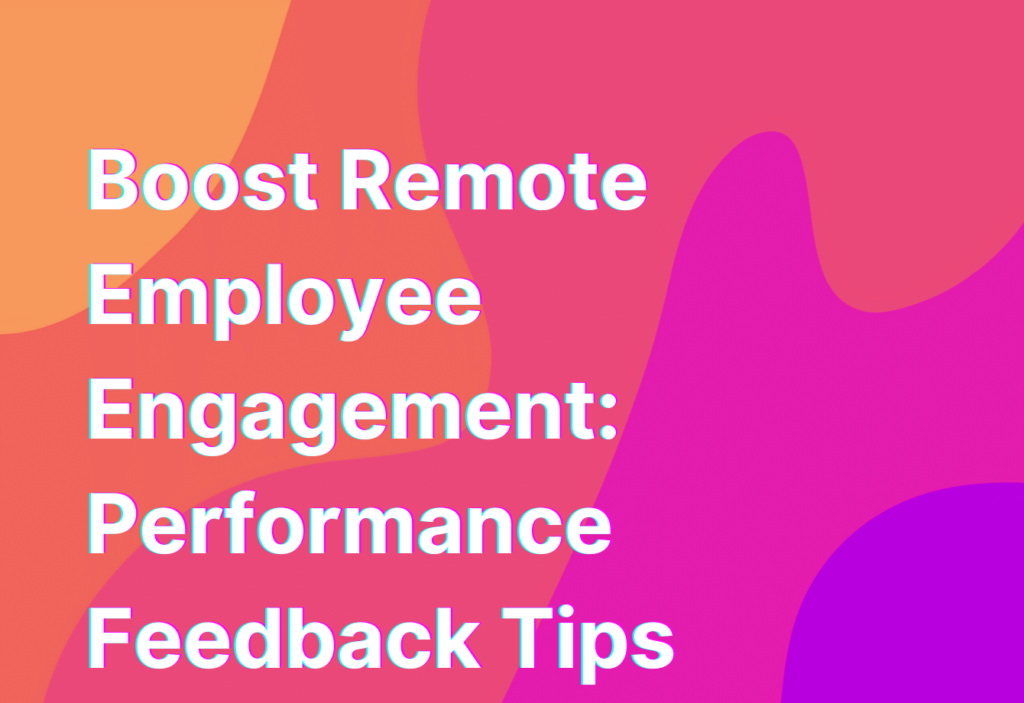Boost Remote Employee Engagement: Performance Feedback Tips
Hey there, remote work enthusiasts! It’s Ashley here, your go-to gal for all things remote work. Today, I want to talk about a crucial aspect of managing remote teams: performance feedback. Providing effective feedback to your remote employees is essential for boosting their engagement and productivity. So, let’s dive right in and explore some tips to help you master the art of performance feedback in a remote work setting.
1. Be Specific and Timely
When giving performance feedback to your remote employees, it’s important to be specific and timely. Instead of vague statements like “good job,” provide specific examples of what they did well. For example, you could say, “Great job on completing the XYZ project ahead of schedule. Your attention to detail and problem-solving skills really shone through.”
Additionally, don’t wait until the next performance review to provide feedback. Timely feedback allows employees to make necessary adjustments and improvements right away. Whether it’s positive reinforcement or constructive criticism, make sure to provide feedback in a timely manner.
2. Use the Sandwich Technique
Now, I’m not talking about actual sandwiches here (although they can be quite delicious!). The sandwich technique is a feedback method where you “sandwich” constructive criticism between two positive statements. This approach helps soften the blow and makes the feedback more palatable.
For example, you could start with a positive comment like, “You did an excellent job on the client presentation. Your slides were visually appealing, and your delivery was confident.” Then, provide the constructive criticism, such as, “However, I noticed that you didn’t address the client’s main concerns adequately. Next time, try to anticipate their questions and concerns beforehand.” Finally, end on a positive note, like, “Overall, I appreciate your efforts and believe that with a little more preparation, you’ll knock it out of the park next time!”
3. Foster a Growth Mindset
A growth mindset is essential for remote employees to thrive and continuously improve. Encourage your remote team members to embrace challenges, learn from their mistakes, and seek opportunities for growth. When providing feedback, emphasize the potential for growth and development.
For example, instead of saying, “You made a mistake in the report,” you could say, “I noticed an error in the report, but I believe it’s a great learning opportunity for you to enhance your attention to detail. Let’s work together to ensure it doesn’t happen again in the future.”
4. Leverage Technology
One of the advantages of remote work is the abundance of technology at our fingertips. Take advantage of tools like project management software, communication platforms, and performance tracking systems to provide feedback effectively.
For instance, you can use project management tools like Trello or Asana to leave comments and feedback directly on specific tasks or projects. This allows for clear and organized feedback that can be easily referenced by both you and your remote employees.
Additionally, video conferencing tools like Zoom or Microsoft Teams can be used for face-to-face feedback sessions. Seeing each other’s facial expressions and body language can enhance the effectiveness of feedback and create a more personal connection.
5. Encourage Self-Reflection
Remote employees often have more autonomy and independence in their work. Encouraging self-reflection can empower them to take ownership of their performance and growth. Ask your remote employees to reflect on their own work and provide self-assessments.
For example, you could ask them to answer questions like, “What do you think went well in this project?” or “What could you have done differently to achieve better results?” This self-reflection exercise not only helps them identify areas for improvement but also promotes accountability and self-awareness.
Wrapping Up
And there you have it, my friends! Some valuable tips to boost remote employee engagement through effective performance feedback. Remember to be specific and timely, use the sandwich technique, foster a growth mindset, leverage technology, and encourage self-reflection.
If you want to dive deeper into building a remote work culture that boosts employee engagement, check out this Remote work culture article on our website. It’s packed with even more insights and strategies to create a thriving remote team.
Until next time, keep rocking the remote work life!


